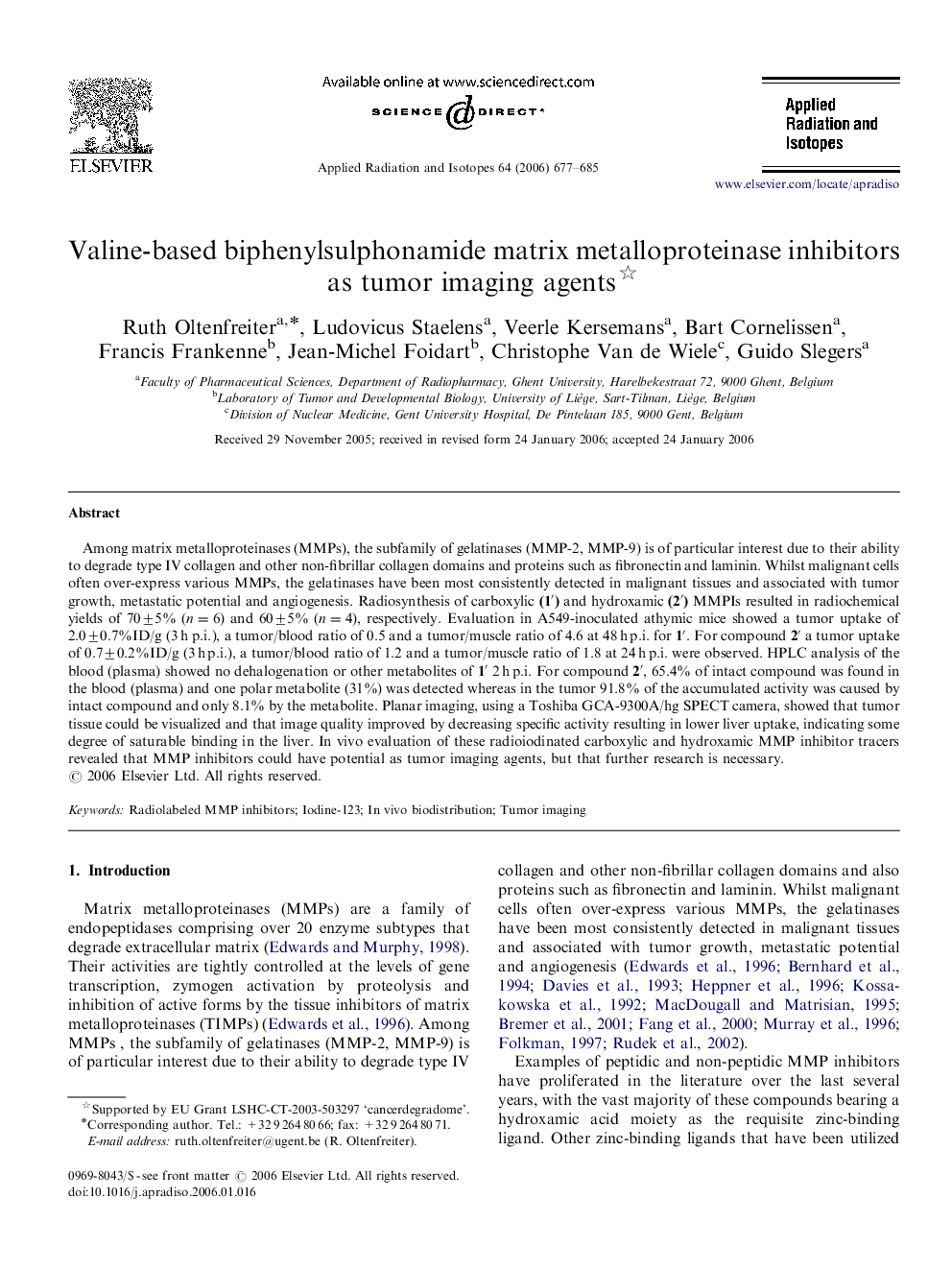| Article ID | Journal | Published Year | Pages | File Type |
|---|---|---|---|---|
| 1878313 | Applied Radiation and Isotopes | 2006 | 9 Pages |
Among matrix metalloproteinases (MMPs), the subfamily of gelatinases (MMP-2, MMP-9) is of particular interest due to their ability to degrade type IV collagen and other non-fibrillar collagen domains and proteins such as fibronectin and laminin. Whilst malignant cells often over-express various MMPs, the gelatinases have been most consistently detected in malignant tissues and associated with tumor growth, metastatic potential and angiogenesis. Radiosynthesis of carboxylic (1′) and hydroxamic (2′) MMPIs resulted in radiochemical yields of 70±5% (n=6n=6) and 60±5% (n=4n=4), respectively. Evaluation in A549-inoculated athymic mice showed a tumor uptake of 2.0±0.7%ID/g (3 h p.i.), a tumor/blood ratio of 0.5 and a tumor/muscle ratio of 4.6 at 48 h p.i. for 1′. For compound 2′ a tumor uptake of 0.7±0.2%ID/g (3 h p.i.), a tumor/blood ratio of 1.2 and a tumor/muscle ratio of 1.8 at 24 h p.i. were observed. HPLC analysis of the blood (plasma) showed no dehalogenation or other metabolites of 1′ 2 h p.i. For compound 2′, 65.4% of intact compound was found in the blood (plasma) and one polar metabolite (31%) was detected whereas in the tumor 91.8% of the accumulated activity was caused by intact compound and only 8.1% by the metabolite. Planar imaging, using a Toshiba GCA-9300A/hg SPECT camera, showed that tumor tissue could be visualized and that image quality improved by decreasing specific activity resulting in lower liver uptake, indicating some degree of saturable binding in the liver. In vivo evaluation of these radioiodinated carboxylic and hydroxamic MMP inhibitor tracers revealed that MMP inhibitors could have potential as tumor imaging agents, but that further research is necessary.
